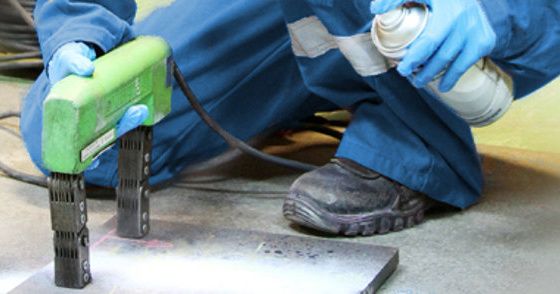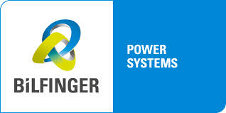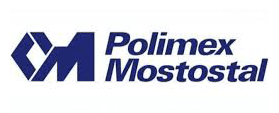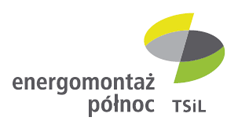Magnetic Particle Testing (MT)
Magnetic Particle Testing — image gallery
Why choose us?
- We deliver on our promises – when we say we’ll do something, we do it!
- Flexible service with quick turnaround times
- Independent and impartial testing
- Successful track record of delivering NDT services to various industries including large-scale industrial projects for global clients
- Highly trained and certified, multi-disciplined specialists
- Modern and always well-calibrated equipment
- Testing performed according to the written procedures approved by a level III NDT engineer
- Quality of service verified and confirmed by the approvals of the independent certification bodies
- Always ready to answer questions on testing and quality assurance
Service Information
Magnetic Particle Testing (MT)
Magnetic particle examination is a cost effective and efficient method of testing ferromagnetic components for discontinuities that are near or open to the surface. Magnetic particle testing is widely used throughout various industries to locate surface and near surface defects such as cracks, laps, seams, inclusions, voids and pits. This techniques can be performed in-house or in the field on a wide variety of manufactured materials and components. At LBNiW we utilize magnetic particle testing to inspect:
- New fabrication welds for code compliance
- Castings, forgings, valves and their components, machined parts, pressure vessels, storage tanks, cranes and structural steel welds
- In-service welds and components
Magnetic particle testing works by magnetizing a ferromagnetic specimen using a magnet or special magnetizing equipment. If the test object has a discontinuity, the magnetic field flowing through it is interrupted and leakage field occurs. Magnetic particles applied to the surface of a specimen are attracted to leakage fields and cluster to form an indication directly over the discontinuity. The indications are visually detected under proper lighting conditions which allow a qualified inspector to assess location, size, shape and extent of these imperfections.
Magnetic particle inspection comprises the following basic steps:
- Pre-cleaning of component
- Magnetization of test object
- Application of magnetic media
- Interpretation of magnetic particle indications
It is crucial that particles have an unconstrained path for migration to both strong and weak leakage fields. Therefore, the test object should be clean and dry before beginning the inspection process. The presence of oil, grease or scale may compromise the inspection.
Our Qualifications
LBNiW offers in-house and on-site magnetic particle inspection services using yoke type magnetizing equipment. All our MT specialists are certified to level 2 according to ISO 9712 (EN473). They are well-trained inspectors that have good understanding and experience in both the method of inspection and the nature of the industries they are working. They follow strict testing procedures and industry standards that prescribe how inspections should be performed and/or special considerations to be employed. Our experts utilize up-to-date, properly calibrated equipment which guarantees accurate and consistent results.
Advantages of Magnetic Particle Testing Method
- Fast method of inspection. Immediate indications are visible directly on the specimen surface
- Very good sensitivity to fatigue cracking, hydrogen induced cracking, and stress corrosion cracking
- Very portable inspection especially when used with battery powered equipment
- Can detect both surface and near subsurface indications, and these are the most serious ones as they concentrate stresses
- The method can be adapted for site or workshop use
- Considered low cost compared to many other NDT techniques
- Large or small objects with irregular shapes can be examined easily
Disadvantages of Magnetic Particle Testing Method
- It is limited to ferromagnetic materials and cannot be used on austenitic stainless steel
- Most methods need a supply of electricity
- The method cannot be used if a thick paint coating is present
- Spurious, or non-relevant indications, are probable, and thus interpretation is a skilled task
- Cannot detect deep subsurface flaws
- Some applications require parts to be demagnetized after inspection
Relevant Codes & Standards
Application Specific Standards
- EN 12952-6, Water-tube boilers and auxiliary installations Inspection during construction; documentation and marking of pressure parts of the boiler
- EN 12953-5, Shell boilers. Inspection during construction, documentation and marking of pressure parts of the boiler
- EN 13480-5, Metallic industrial piping Inspection and testing
- EN 13445-5, Unfired pressure vessels Inspection and testing
- EN 12732, Gas infrastructure. Welding steel pipework. Functional requirements
- EN 14015, Specification for the design and manufacture of site built, vertical, cylindrical, flat-bottomed, above ground, welded, steel tanks for the storage of liquids at ambient temperature and above
- EN 1090-2, Execution of steel structures and aluminium structures Technical requirements for steel structures
- EN 14197-2, Cryogenic vessels. Static non-vacuum insulated vessels Design, fabrication, inspection and testing
- EN 13458-2, Cryogenic vessels. Static vacuum insulated vessels Design, fabrication, inspection and testing
- EN-ISO 9606-1, Qualification testing of welders. Fusion welding Steels
- EN-ISO 9606-2, Qualification test of welders. Fusion welding Aluminium and aluminium alloys
- EN ISO 15614-1 Specification and qualification of welding procedures for metallic materials. Welding procedure test. Arc and gas welding of steels and arc welding of nickel and nickel alloys
- EN-ISO 17635, Non-destructive testing of welds. General rules for metallic materials
Standards Specific to Magnetic Particle Examination
- EN-ISO 17638, Non-destructive testing of welds – Magnetic particle testing
- EN-ISO 23278, Non-destructive testing of welds – Magnetic particle testing of welds – Acceptance levels
- EN 10228-1, Non-destructive testing of steel forgings – Magnetic particle inspection
- EN 1369, Founding. Magnetic particle testing
- ISO 9934-1, Non-destructive testing – Magnetic particle testing – Part 1: General principles
- ISO 9934-2, Non-destructive testing – Magnetic particle testing – Part 2: Detection media
- ISO 9934-3, Non-destructive testing – Magnetic particle testing – Part 3: Equipment
- ISO 3059, Non-destructive testing – Penetrant testing and magnetic particle testing – Viewing conditions
- ASME Boiler and Pressure Vessel Code Section V Article 7 – Magnetic Particle Examination
Our MT Resources
We hold the following magnetic particle testing equipment:
- Multiple magnetic yokes by Magnaflux and Parker Research
- We utilize magnetic particle testing materials by MR® Chemie GmbH

















